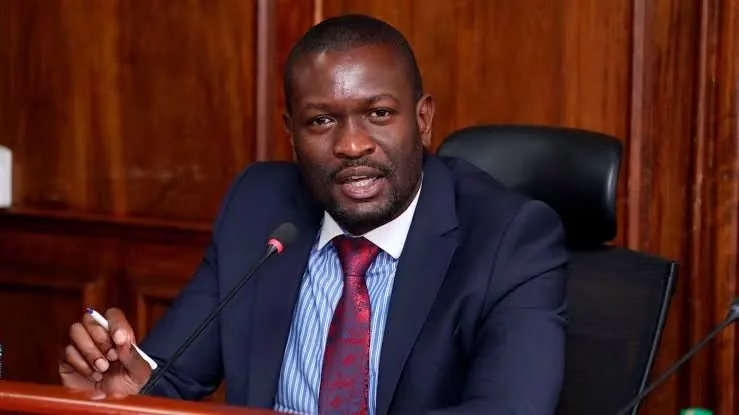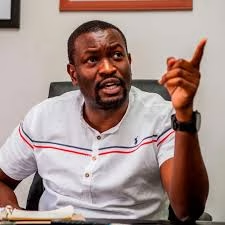Edwin Sifuna’s remarks about the 2027 elections during Raila Odinga’s burial have divided Kenyans. Many say he moved too fast, while others see his comments as strategic. The debate reflects ODM’s struggle to balance mourning with political continuity.

Kenya Still Mourning Raila Odinga
Kenya is still mourning the death of Raila Amollo Odinga, the long-serving opposition leader and democracy icon. His passing has left a deep emotional scar across the nation. For decades, Raila defined political courage and persistence. His leadership shaped not only ODM but the entire opposition movement in Kenya.
As the country continues to grieve, one statement during his burial has sparked public outrage. Edwin Sifuna, ODM Secretary-General and Nairobi Senator, told mourners that the party must prepare to field a presidential candidate for the 2027 elections.
His remarks came less than a week after Raila’s death, and during his burial ceremony. That timing has left many Kenyans asking—was Sifuna too fast to move on?
Sifuna’s Statement During Raila’s Burial
Speaking to mourners in Bondo, Sifuna reminded supporters that ODM had always produced a presidential candidate in every election since its formation. He said 2027 would be no different. See https://www.youtube.com/shorts/yENnuSs9uyU
Sifuna’s tone was assertive and confident. He appeared determined to assure ODM supporters that the party would remain active even after Raila’s death. But to many Kenyans watching, the message felt too early, especially when the country was still emotionally raw.
Political speeches are normal in funerals of major leaders, but discussing succession and elections while the nation was still mourning struck many as insensitive and politically premature.
Public Reaction to Sifuna’s Remarks
Public reaction has been swift and divided. On social media, many Kenyans expressed disappointment, arguing that ODM leaders should have focused on honoring Raila’s memory, not on the next political race.
“Let Kenyans breathe. Raila is barely gone a week, and already ODM is talking about 2027?” one user wrote on X.
Others defended Sifuna, saying he was right to think ahead. They argued that Raila himself would have wanted ODM to remain strong and united.
This clash of views reveals a deeper struggle between emotion and strategy inside ODM.
Why Sifuna Might Have Moved Quickly
While many view his words as rushed, Sifuna may have had strategic reasons.
Raila’s death has created a leadership vacuum in ODM. Without clear direction, rival coalitions could easily poach ODM’s base. Sifuna likely wanted to show strength and continuity. His message could have been an attempt to protect ODM’s relevance before internal divisions grow.
He may also be trying to prevent ODM from being overshadowed by allies in Azimio, such as Kalonzo Musyoka or Martha Karua, who may now position themselves for 2027.
So while emotionally harsh, Sifuna’s remarks may reflect a practical survival strategy for ODM.
The Emotional vs. Strategic Divide
Sifuna’s remarks highlight a divide both within ODM and among Kenyans:
- The Emotional Camp – Believes the party and the nation need time to heal before politics resumes. They view Sifuna’s comments as insensitive and disrespectful to Raila’s memory.
- The Strategic Camp – Argues that politics never stops. They see Sifuna as following Raila’s own philosophy of planning ahead and refusing to surrender momentum.
The two sides are not necessarily enemies—they simply reflect the tension between mourning and continuity.
The Importance of Timing
Even a well-intentioned message can fail if delivered at the wrong time. Sifuna’s statement would have been seen as visionary if made at a later ODM meeting or during a memorial conference. But saying it at Raila’s burial made it sound cold and political.
Timing matters. Kenya is still grieving, and emotions remain high. ODM now risks appearing divided and insensitive unless it handles this transition with care.
How ODM Can Move Forward
For ODM to survive this delicate moment, it must strike a balance between honoring Raila’s legacy and preparing for the future.
- Hold a Raila Odinga Legacy Conference – Acknowledge his contributions, unite supporters, and chart the future direction respectfully.
- Use Healing Language – Emphasize continuity and the preservation of Raila’s vision instead of rushing to name a successor.
- Control Public Messaging – Senior leaders must coordinate statements to avoid confusion or emotional backlash.
ODM’s next phase must feel like a continuation of Raila’s dream, not an erasure of it.
Who Leads ODM After Raila?
Sifuna’s comments indirectly opened the biggest question in Kenyan politics: who will lead ODM into 2027?

Names like Winnie Odinga, Hassan Joho, and Wycliffe Oparanya are being whispered. Each brings a different kind of energy to the table. But whoever steps up must do so with humility and respect for Raila’s legacy.
ODM cannot afford internal rivalry now. It needs to show unity, empathy, and vision.
Final Thoughts
Edwin Sifuna’s remarks about the 2027 elections may have been strategically wise but emotionally mistimed. Kenya is still mourning, and ODM supporters needed comfort, not campaign talk.
The message itself—about keeping ODM alive—was not wrong. The problem was how and when it was delivered.
Sifuna’s challenge now is to repair the emotional damage, reassure supporters, and prove that ODM’s next chapter will carry Raila’s spirit forward.
In the end, Kenyans may forgive his timing—but only if the party shows genuine respect before talking about power. Related story https://www.whispers.co.ke/998/politics/2025/after-death-who-will-take-over-raila-odinga/
